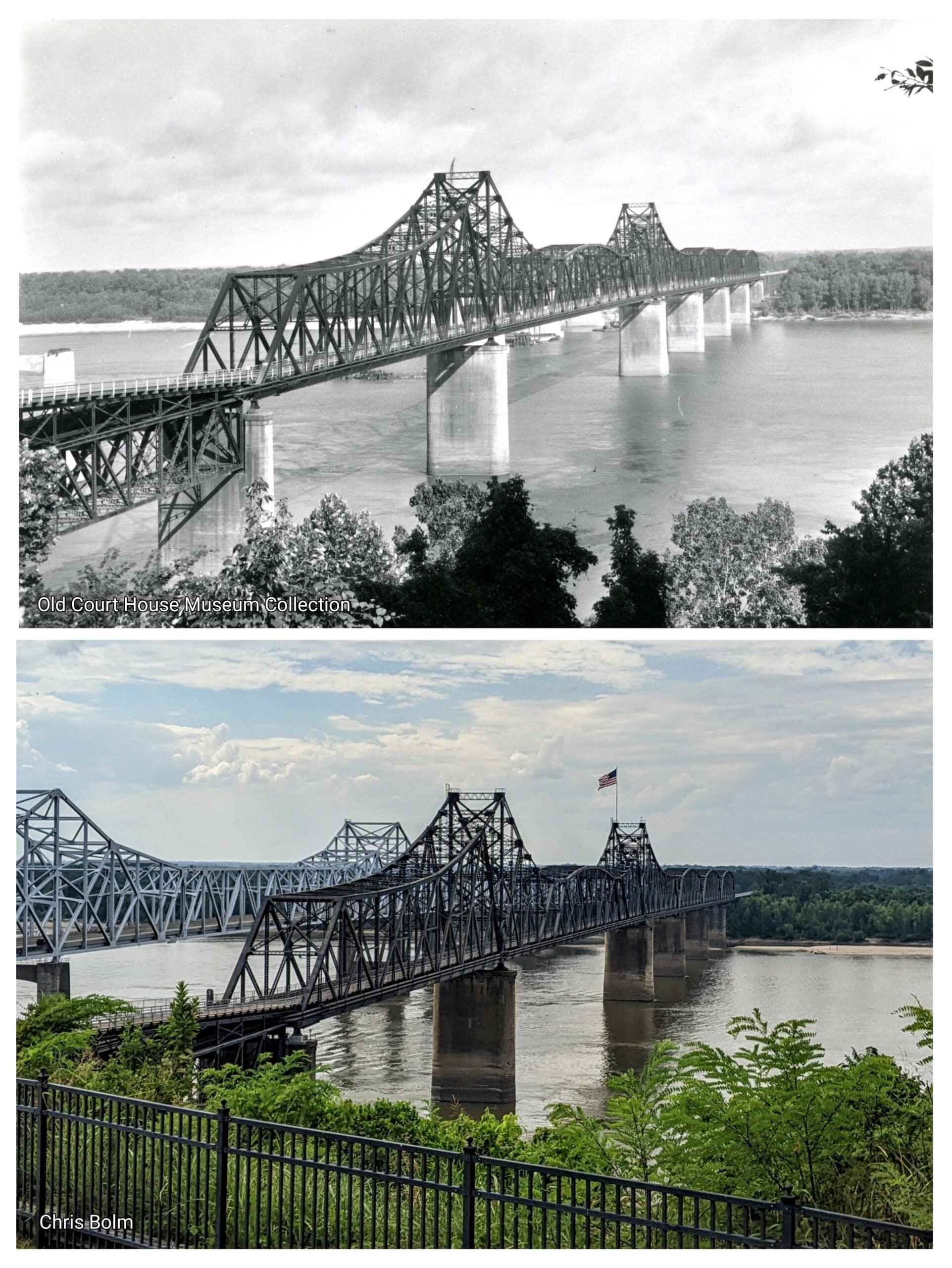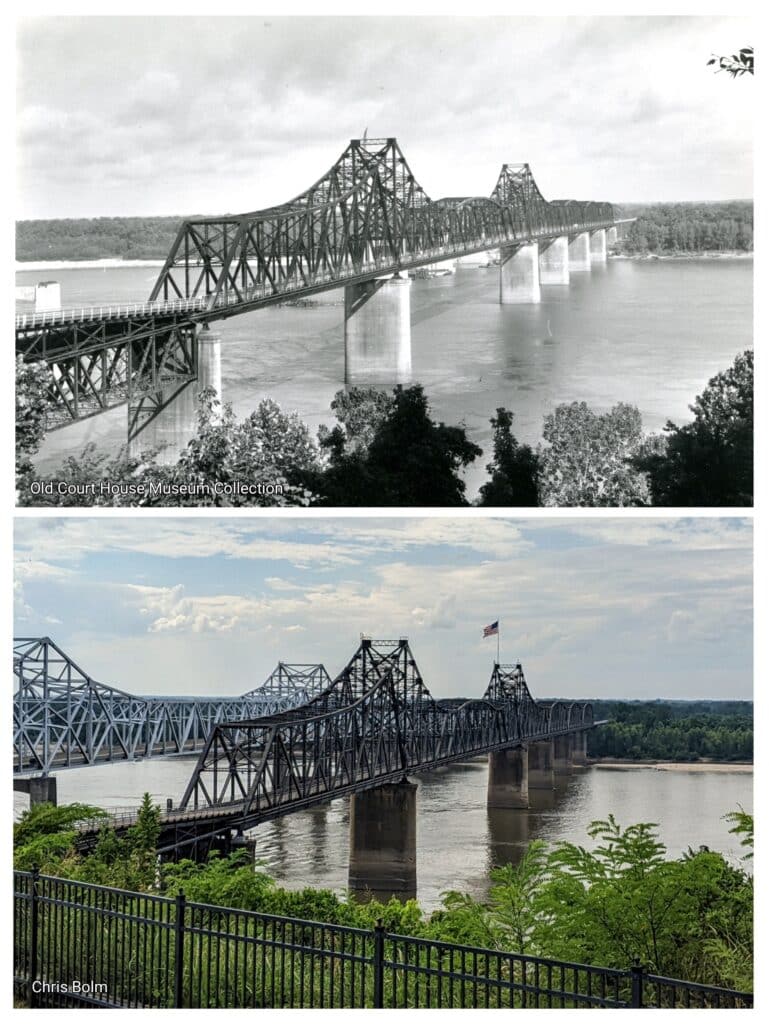News
Then & Now:The Twin Crossings

Bridging the Past: The Twin Crossings Over the Mississippi at Vicksburg
by Chris Bolm
VICKSBURG, Miss. (VDN) — Stretching across the Mississippi River at Vicksburg, two bridges, one historic and one modern, stand as symbols of connection and change. From the rhythmic clatter of rail cars to the steady hum of highway traffic, the Old Vicksburg Bridge and the Interstate 20 bridge each tell part of the story of how this small city helped link a growing nation.
What was once only a dream became reality in 1926, when entrepreneur Harry E. Bovay helped advance the idea of a permanent bridge at Vicksburg. Congress authorized the construction that same year, and by 1930 the Old Vicksburg Bridge was complete. Cars crossed the river for the first time on April 28, followed by the first train a few days later, on May 1st. The construction cost at the time was just over 4.7 million dollars.
The bridge was designed as a cantilevered truss, with an overall length of 8,546 feet, including the approaches. It carried both rail and automobile traffic and was the first bridge to cross the river south of Memphis, making it a vital route for travelers and commerce throughout the Deep South.

Originally operated by the Vicksburg Bridge & Terminal Company, the structure ran into financial trouble within a few years. In 1947, Warren County purchased the bridge for 7 million dollars and established the Vicksburg Bridge Commission the following year to manage and maintain it.
By the 1960s, as vehicle traffic increased and the interstate highway system expanded, it became clear that a second bridge was needed. Construction of a new crossing began in the early 1970s as part of the Interstate 20 project. The new bridge opened to traffic on February 14, 1973.
With four lanes and a total length of 12,974 feet, including its approaches, the I-20 bridge quickly became the primary route for cars and trucks traveling between Mississippi and Louisiana. U.S. Highway 80 was redirected onto the new bridge, while the original continued to support rail service and, for a time, limited vehicle access.
Over time, the Old Vicksburg Bridge began to show signs of deterioration. In 1998, due to safety concerns about structural integrity, vehicle traffic was permanently halted. While it no longer serves cars, the bridge remains in regular use for rail traffic and is occasionally opened for special pedestrian events.
In 1989, the Old Vicksburg Bridge was added to the National Register of Historic Places. Since then, local officials and residents have discussed ways to preserve and repurpose it. Ideas have included turning part of the structure into a walking or biking trail, though no formal plans have been adopted.
Today, the I-20 bridge continues to serve thousands of drivers each day and has undergone several safety upgrades, including modern radar systems to guide barge traffic safely beneath its span. It remains a key transportation link in the region.
Together, the two bridges tell a story that spans nearly a century. One reflects the ambition and innovation of the early 20th century, while the other meets the demands of modern travel. Both stand as reminders of Vicksburg’s role in connecting people, places, and history across one of America’s most iconic rivers.
The first image is part of the Old Court House Museum’s Collection and was taken in the early 1970s during the construction of the pilings for the I-20 bridge. The second image was recently taken by Chris Bolm.
The Old Court House Museum has an outstanding collection of historic photos from Vicksburg and Warren County. If you are ever interested in getting an old photo printed for your home or business, contact the staff at the Old Court House Museum and they can make it happen.
______________________________________________________________________
Starting in 2022, Chris Bolm began to take images from the Old Court House Museum‘s photo collections and pinpoint their current locations and replicate the shot. Bolm named the series “Then and Now.”
See a typo? Report it here.












